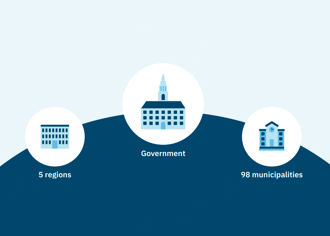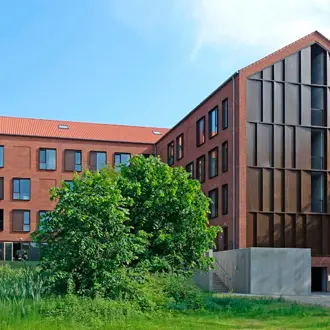

A highly decentralised public sector
The Danish public sector is one of the most decentralised public sectors in the world. The municipalities and regions are defined by law, and the right of self-government is set out in the Danish Constitution and other legislation. The distribution of responsibilities across the entire public sector adheres to the principle that tasks which can be managed locally are handled at the local level. Two-thirds of total public expenditure is spent by local governments. Furthermore, many tasks such as the supply of water and heating are carried out by independent companies supervised and guaranteed by the local governments. The fiscal autonomy of municipalities hinges on their authority to levy taxes. Personal income taxes, which account for slightly over half of municipal revenue, are sourced from the citizens. The remainder is derived from block grants, central government reimbursements, user fees and property taxes. Municipalities have the discretion to set the rates for income and property taxes. In contrast, the regions rely mostly on government grants. However, the municipalities also contribute to the regions by means of activity-based charges and fees relating to most healthcare services.






